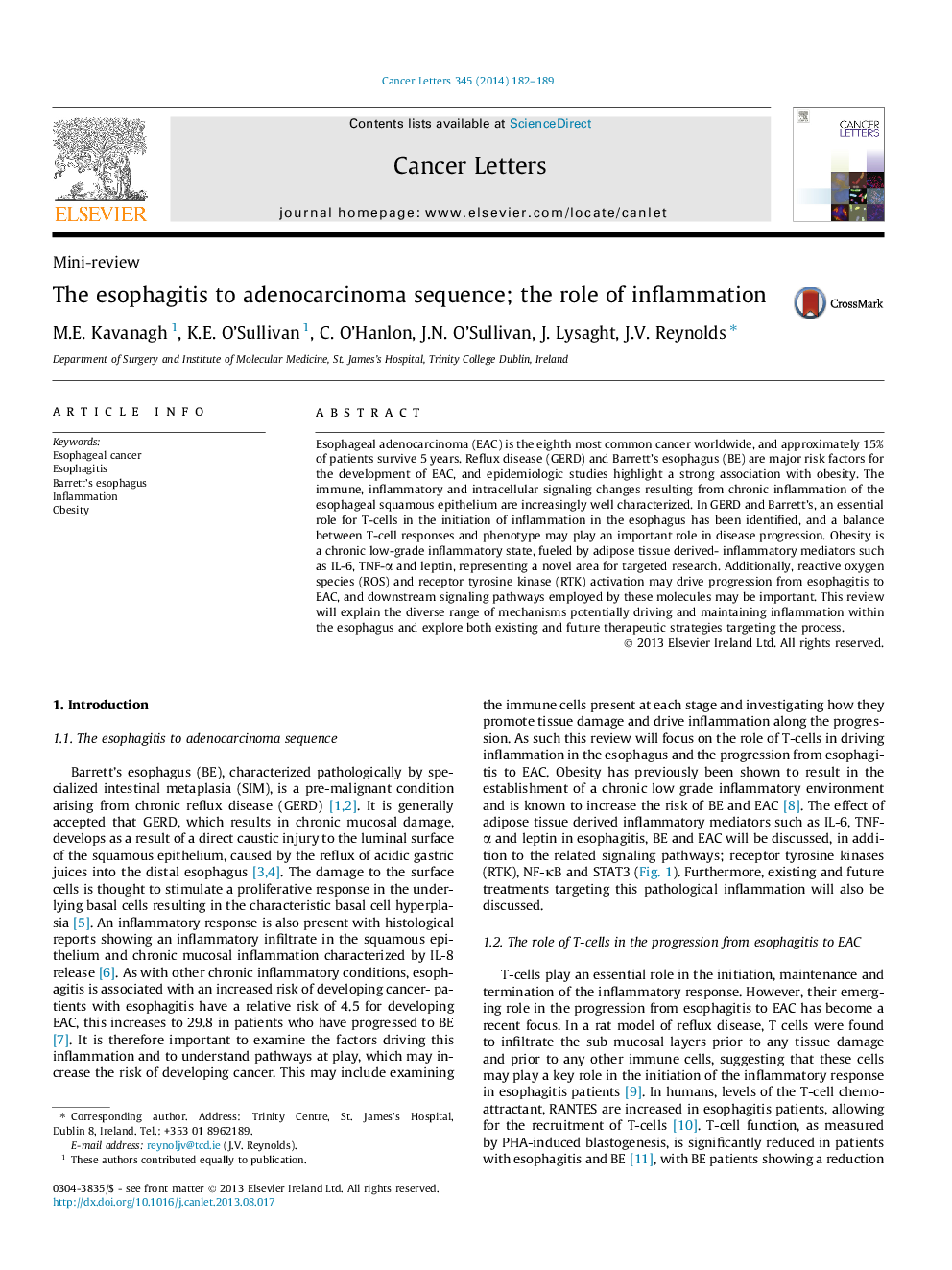| کد مقاله | کد نشریه | سال انتشار | مقاله انگلیسی | نسخه تمام متن |
|---|---|---|---|---|
| 2116232 | 1084804 | 2014 | 8 صفحه PDF | دانلود رایگان |
Esophageal adenocarcinoma (EAC) is the eighth most common cancer worldwide, and approximately 15% of patients survive 5 years. Reflux disease (GERD) and Barrett’s esophagus (BE) are major risk factors for the development of EAC, and epidemiologic studies highlight a strong association with obesity. The immune, inflammatory and intracellular signaling changes resulting from chronic inflammation of the esophageal squamous epithelium are increasingly well characterized. In GERD and Barrett’s, an essential role for T-cells in the initiation of inflammation in the esophagus has been identified, and a balance between T-cell responses and phenotype may play an important role in disease progression. Obesity is a chronic low-grade inflammatory state, fueled by adipose tissue derived- inflammatory mediators such as IL-6, TNF-α and leptin, representing a novel area for targeted research. Additionally, reactive oxygen species (ROS) and receptor tyrosine kinase (RTK) activation may drive progression from esophagitis to EAC, and downstream signaling pathways employed by these molecules may be important. This review will explain the diverse range of mechanisms potentially driving and maintaining inflammation within the esophagus and explore both existing and future therapeutic strategies targeting the process.
Journal: Cancer Letters - Volume 345, Issue 2, 10 April 2014, Pages 182–189
